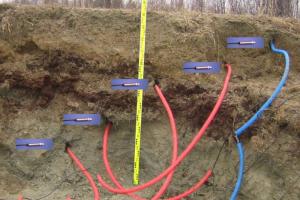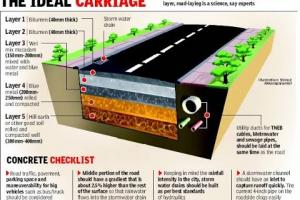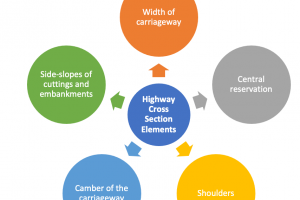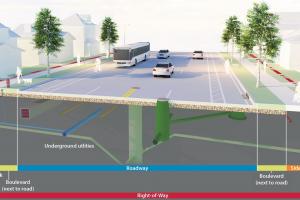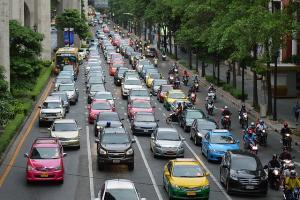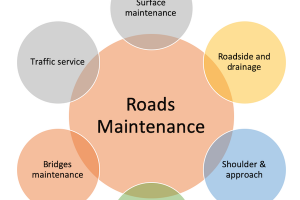Level of Service and Factors Affecting LOS
Definition:
LOS is a scale which defines the operating conditions on highway. It is a measure of the restrictive effects of the increased volume, level of service as proposed by manual ranges from A to F, A is ideal level and F is worst level of service.
| LOS | Max.Density (PC/min/lane) |
| A | 12 |
| B | 20 |
| C | 30 |
| D | 42 |
| E | 67 |
| F | > 67 |
LOS A:
Density is low enough that closeness of vehicle do not effect vehicle movement
LOS E:
No usable gap between vehicles, speed is slow,, condition can easily cross over into LOS F region.
LOS F:
Breakdown condition, number of vehicles arriving > number of vehicles leaving, speed is zero.
Elements to evaluate LOS:
- Travel speed and travel time
- Volume to capacity ration (V/C) ratio
- Density (number of vehicles per unit length on highway, D=F/S, where S is speed and F is flow in pcph)
- Delay (at intersection, signals) If V/C =1 (level E) V/C >1 level of service is low
- Peak hour factor (PHF): The ratio between flow for entire peak hr and the maximum hourly rate of the flow during 15 minute of that hour
- Service flow = SF = V / PHF = Peak hour volume / PHF
Where = Correction factor for road width
= Correction factor for heavy vehicle
= Correction factor for driver population
F HV = 1 / ( ( 1 + Pt ( Et - 1 ) + Pb ( Eb - 1 ) + PR ( ER - 1) )
Et, Eb, ER,, Passenger car equivalent for truck, bus and recreational vehicles.
Pt, Pb, PR,, Proportion of respective class vehicles N is the number of lanes in one direction. CJ is the capacity per lane (pcphpl)
Level of Service LOS, Level of Service definition, Factors affecting Level of Service, Elements to evaluate LOS, Elements to evaluate LOS




